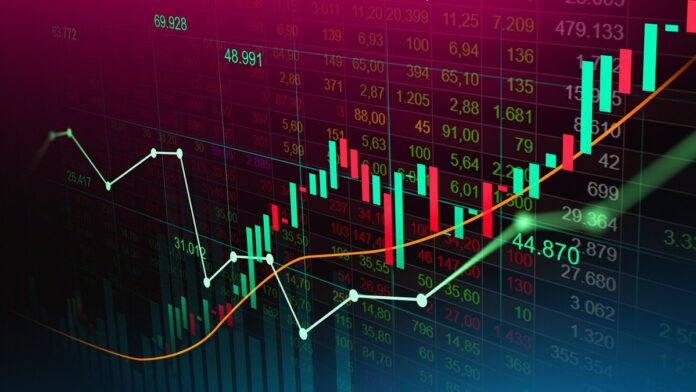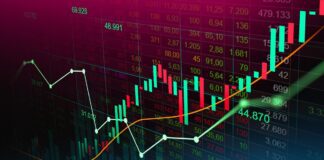How to Trade FOREX, Stocks, Cryptocurrency with Caution
Trading foreign exchange currencies (FOREX) stocks, and cryptocurrency is popular in Nigeria as it is in other climes. Fluctuations in prices provide an opportunity to buy low and sell high. This is the same thing market women selling on the street apply but here on a higher level.
The rule is, to buy cheap and sell high. However, in the financial market, it is a different ball game as a large number of parties, issues and development drive prices – up or down.
For money that you cannot afford to lose, the strategy that risk-averse investors use is the application of the 2% rule. For any asset class that you wish to take a position, it simply means you can put just 2% of the entire cash into a risky venture.
But that will automatically reduce the size of upside potential but you are on a safer side. Across the markets, prices of investment assets have been affected by interruptions in the global economic metrics.
Many will shy away from betting on investment assets, and some with market knowledge will keep at it knowing fully well that it cost money to keep money – at a time when global inflation has increased steeply.
These days, most people want to investment foreign exchange market where rates change at the speed of light. Other areas include stock market investment and of course, the cryptocurrency market.
Super rich are not actually or in most cases seeking alpha profit but they are very cautious at maintaining their wealth by placements in fixed income markets. In Nigeria, investing in naira assets exposed wealth to a worrisome increase in headline inflation. As though that were not enough, the local currency can make a billionaire develop blood pressure overnight.
Naira has continued to lose value – thus, investment denominated in the local currency has stronger exposure compared with dollar-denominated asset classes. But the apex bank has to pro-rate dollar for use among competing interests.
Sophisticated investors buy the blood when most people chicken out from the stock or cryptocurrency market. When the market price of a particular investment option drop, the decline provides an entry point for wannabe investors.
The principle is the same across asset classes whose prices fluctuate. The difference is, some traders are more sophisticated than others. And, their risk appetite and technical know-how are not always the same.
Even when they were trained by the same organisation and do similar jobs, results often differ based on some outliers’ factors – including experience, appetite for risk and ability to forecast trends.
Back below $20,000
Bitcoin is also struggling at the start of the week after breaking back below $20,000 on Friday and failing to recapture those losses over the weekend. Ultimately, little has changed though. The cryptocurrency has been fluctuating around $20,000 for months and that remains the case now.
The Nigerian Exchange shed about N661 billion last week as selloffs hit some of the industry’s mid- and large-cap stocks in the local bourse. This does not mean that equities investors will not take further repositioning.
In an actual sense, it provides an opportunity to rebalance portfolios across various asset classes, while investors continue to cherry-pick stocks with better, healthy fundamentally.
How to Trade FOREX, Stocks, Cryptocurrency with Caution
The 2% rule is an investing strategy where an investor risks no more than 2% of their available capital on any single trade. It is sophisticated and easy to apply as a safeguard against potential losses.
To implement the 2% rule, an investor first must calculate what 2% of their available trading account is, let’s say $5,000.00 account equals $100.00 risk per trade.
The 2% rule is an investing strategy where an investor risks no more than 2% of their available capital on any single trade. To apply the 2% rule, an investor must first determine their available capital. Stop-loss orders can be implemented to maintain the 2% rule risk threshold as market conditions change.
How the 2% Rule Works
The 2% rule is a restriction that investors impose on their trading activities in order to stay within specified risk management parameters.
For example, an investor who uses the 2% rule and has a $100,000 trading account, risks no more than $2,000–or 2% of the value of the account–on a particular investment.
By knowing what percentage of investment capital may be risked, the investor can work backward to determine the total number of lot size to purchase. The trader can also use stop-loss orders to limit downside risk.
In the event that market conditions change, an investor may implement a stop order to limit their downside exposure to a loss that only represents 2% of their total trading capital. READ:Cryptocurrencies Theft: Hackers Stole $2 Billion in July
Even if a trader experiences ten consecutive losses, using this investment strategy, they will only draw their account down by 20%.
The 2% rule can be used in combination with other risk management strategies to help preserve a trader’s capital. For instance, an investor may stop trading for the month if the maximum permissible amount of capital they are willing to risk has been met.
# How to Trade FOREX, Stocks, Cryptocurrency with Caution#































































































